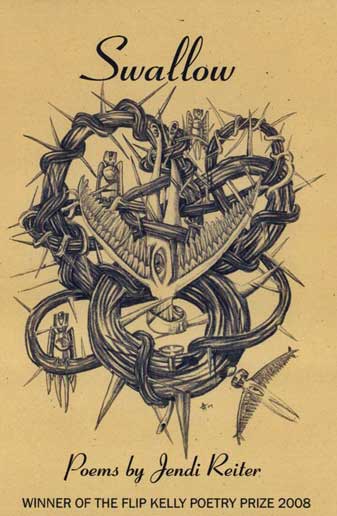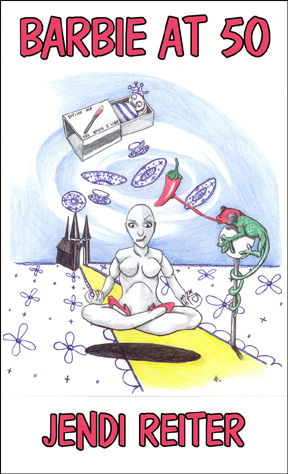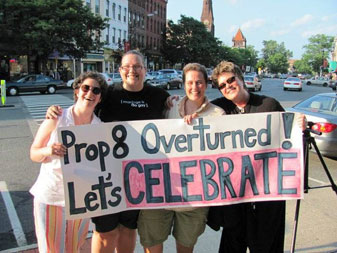In this season’s episodes of “Jendi discovers the obvious”, I want to look at some common secularist jibes at religion that I used to dismiss, but that are currently disrupting the faith I once knew:
“The Christian God is just a projection of believers’ relationship with their (real or ideal) parents.”
“I can’t believe in Christianity because Christians do bad things in the name of their faith.”
“The Bible’s moral, social, and/or scientific worldview is too primitive to be authoritative for us today.”
****
Today’s topic: If God is my parent, must I stay forever a child?
Tim Clinton, president of the American Association of Christian Counselors, and Joshua Straub, an adjunct professor at Liberty University (the late Jerry Falwell’s school), are the authors of God Attachment, a book that examines the psychological reasons why we do or don’t feel close to God. They summarized their research for CNN’s religion blog last month.
Attachment theory posits that the quality of our bond with our earliest caregivers influences our subsequent view of the world as a safe or unsafe place. Unreliable or abusive caregivers can foster a fearful, controlling attitude toward relationships later on. Instead of trusting that we are loved and our needs will be met by the person responsible for us, we may feel we have to compel their love through proper behavior or awaken their pity through self-harm.
Just as an insecurely attached child might believe that survival depends on manipulating their parent’s reactions, Christians with this kind of personal history might be especially drawn to legalism and superstition in their relationship with God the Father. Clinton and Straub write, “much of modern-day thinking about how to connect with God has been reduced to a theory of sin management — that what we do or don’t do in our daily lives is the gauge by which we measure why we are, or are not, close with him.” This reminded me of the unreasonable responsibility that abuse victims feel to “prevent” their abuse by predicting the will of a capricious spouse or parent.
Clinton and Straub go on to say:
If we don’t feel safe; if we are confused in our core beliefs about whether we’re worthy of love or whether others are capable of loving us or accessible when we need them, then we’ll transfer those beliefs onto God and struggle to believe he could really be there for us.
But if God serves the functions of an attachment relationship in our individual lives, it can be the difference between cognitively believing in God, as most do, and emotionally connecting, trusting, and walking with him every day, which is much less common.
If you came from a dysfunctional family and stopped reading now, you might be tempted to believe that it is impossible to have a genuine relationship with or healthy view of God. But the good news is that research supports the notion that those with insecure relationship styles can and do find a close, secure relationship with God as they turn to him and discover he is not like other attachment figures who have hurt them in life.
Perhaps it’s time to challenge our beliefs about God (if we’ve seen him as disinterested or unavailable) and re-evaluate our own identity (if we tend to see ourselves as hopeless or unlovable). Finding hope and meaning doesn’t happen overnight. There’s no magic prayer or verse that will heal the wounds we’ve experienced. We need to be honest with ourselves, grieve our losses, repent of our own wrongdoings, forgive those who have hurt us, and learn new relational skills.
Just like any other relationship, building intimacy with God requires vulnerability. Honesty. Time. Prayer. Focus. Listening. Journaling. Reading the Bible. Meditating.
Remember, the goal is to connect with God, and get to know him for who he really is. This often requires peeling off layers of false core relational beliefs.
When we understand our relationship with God in light of attachment research, we begin to realize how our unhealthy preoccupation with anxiety, fear, guilt, or self-punishment may actually be shutting out the love and healing we truly long for.
God is not like your mother, your father, your spouse, your ex, or any other human that failed, abused, or abandoned you.
…
In my life, the chief way that parents and mentors have messed with my attachment formation is by refusing me permission to grow up — the stage that Buddhist writer Philip Moffitt calls “initiation” in his profound essay Healing Your Mother (or Father) Wound:
It is through acts of initiation that you come to feel as though you are a valuable and welcome member of your family. As you develop, it is this function that provides the inner feeling that your life has meaning, and by the teenage years you understand that you have the right to become the full expression of your own unique life. It is also the initiation function that permits, accepts, and celebrates your leaving home to start your own life….
…When initiation occurs in a timely and clear manner, it is a beautiful process, though often painful for the parent. Most initiation takes place through symbols, rituals, and unspoken behavior. When it does not occur, there is a sense of guilt, of staying a youth, of not knowing or not feeling entitled to one’s place in life. For a mother to be effective in providing initiation, she must have somehow received or found her own. It is the most selfless of all the aspects, for she is encouraging a separation that leaves her without. This initiating power is associated with the shaman, the goddess, the magus, and the medicine woman.
In seeking initiation you may be attracted to teachers who claim superior understanding, who create an impression of having vast authority, thus signaling what is often a false claim that they can initiate. You may frantically want answers in your life, not understanding that initiatory power will come to you if you treat your questions as sacred. It is tempting to surrender your power to a teacher rather than seek a teacher who will initiate you so that you gain self-empowerment.
You may be caught in wanting to have energetic experiences on the cushion as a form of initiation. You may simply want something to happen in your life that signals your aliveness, meaning, and place. It is a call for initiation. It is much the same with teenagers who get tattoos, pierce their bodies, form cliques, posses, or gangs, and carelessly risk their lives and use drugs or fundamentalism of one sort or another to initiate themselves.
It is not realistic to expect a parent to provide all the initiation functions for a child. A parent only begins the process of initiation, which can be viewed as a series of lifelong developmental processes that are actualized through the use of rituals and sacred space by various spiritual and societal leaders.
…
Attachment to a parent figure is not a complete end in itself. It is also meant to give the child a safe base from which to explore the world, a goal noted by all the psychology texts I’ve read on this subject.
Unfortunately, it often seems that religious leaders want to cut off this exploration. Don’t entertain that idea. Don’t question that doctrine. Don’t allow history, science, personal experience, or your own moral intuitions to
inform and change your understanding of “what the Bible says”.
Attachment wounds happen for me in this way: Someone promises me love, community, righteousness, protection, and guidance, while instilling in me that I cannot survive without this support. I accept the support and grow strong enough to start using the gifts this mentor has given me to begin exploring on my own. At this point, the love is withdrawn and replaced by condemnation, the community is lost, and I find myself free but terrified, lonely, and angry that I was taught to be dependent in a world where there is no one to depend on.
Always before, in these situations, I would look to God, and re-learn the lesson that I’m justified by grace alone, not by pleasing human judges.
But swapping in God for my parents and teachers isn’t working anymore. I worry that looking for an attachment figure, even a perfect one like God, still keeps me in the mindset of a child who can’t survive without a caregiver. And let’s face it, eventually this will lead me back to looking for some human being to incarnate this relationship.
I’m a concrete thinker. That’s why I’m a Christian. I don’t trust abstractions that set themselves against and above experience. A spirituality of “just Jesus and me” is more likely to be a projection of my own ego, or a product of my active imagination as a writer. If I’m not seeing the face of Jesus in other people, I’m probably not seeing it at all.
So what would be a more mature way to envision my relationship with God the Father? Who does He want me to be when I grow up?
Truth is, I am mad at God for making me grow up because that’s always been the prelude to abandonment. How can I replace this learned response with a more trustworthy image of God from Scripture, tradition, and experience? Stay tuned.


